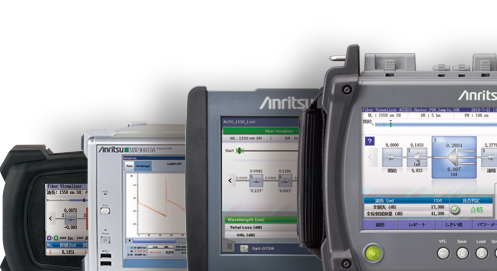Professional Optical Fibre Testing Equipment for Reliable Performance Analysis
Professional Optical Fibre Testing Equipment for Reliable Performance Analysis
Blog Article
Important Features to Seek in Optical Fibre Screening Equipment
When examining optical fibre screening equipment, numerous necessary functions necessitate careful consideration to make sure ideal efficiency and dependability. Compatibility with existing sector standards improves performance, while advanced measurement capabilities, consisting of TDR and OTDR screening, deal important understandings right into network stability. Comprehending these attributes will certainly drop light on how to pick the best equipment for your details needs.
Precision and Precision
Accuracy and precision are important specifications in the evaluation of optical fiber testing equipment. These two characteristics make certain that dimensions reflect truth performance of fibre optic systems, which is essential for effective network setup, maintenance, and troubleshooting. Accuracy describes the closeness of a gauged worth to the real worth, while precision represents the repeatability of dimensions under unmodified conditions.
When selecting optical fiber testing tools, it is vital to think about tools that offer high accuracy and accuracy to reduce errors in information interpretation. Gadgets such as optical time-domain reflectometers (OTDRs) and power meters must have calibration mechanisms to ensure constant efficiency in time. Furthermore, the specs offered by producers should detail the equipment's measurement uncertainty, which directly impacts the integrity of test results.
Moreover, the efficiency of optical fibre testing devices can be affected by environmental elements, such as temperature and humidity. Choosing devices developed to mitigate these variables will certainly boost measurement integrity. Finally, buying optical fiber screening tools with durable precision and precision attributes is basic for maintaining ideal network performance and guaranteeing the honesty of fibre optic interactions.

User-Friendly User Interface
The efficiency of optical fiber testing tools is not exclusively identified by its accuracy and precision; an user-friendly interface plays a significant role in improving functional efficiency. A well-designed interface streamlines the communication between the specialist and the tools, permitting a much more intuitive understanding of complex features.
Key features of a straightforward interface include clear navigating food selections, sensible designs, and conveniently available controls. These components allow service technicians to perform tests swiftly without substantial training, lowering the probability of user mistake - ofda. In addition, visual indications such as development bars, notifies, and visual representations of information can substantially boost the individual experience by offering immediate comments on the screening process.
In addition, customizable settings can better improve operations by permitting users to adjust criteria according to particular screening requirements. This versatility not just saves time however likewise makes certain that the equipment fulfills diverse application demands.
Including aid functions, such as tooltips and detailed handbooks, right into the interface can additionally empower customers, advertising self-sufficiency and confidence in running the tools. Eventually, an user-friendly interface is essential for optimizing the potential of optical fiber screening tools, leading to extra effective and efficient screening results.
Transportability and Toughness
Transportability and sturdiness are important attributes of optical fiber testing equipment, making sure that it can withstand the rigors of various atmospheres while remaining simple to transportation. Technicians typically operate in varied setups, from telecommunications centers to remote installments, making it critical that testing devices are light-weight and compact (ofda). Equipment made with transportability in mind usually includes ergonomic handles and situations that facilitate uncomplicated activity, thus enhancing functional performance on-site
Sturdiness is just as important, as optical fiber screening devices is commonly revealed to rough webpage conditions, including temperature changes, wetness, and physical influences. Instruments constructed with sturdy products such as enhanced plastics or metal housings are much better fit for these atmospheres, minimizing the threat of damage during use and transport. Furthermore, tools with water and dust resistance scores, such as IP scores, ensures reputable performance in challenging conditions.
Compatibility With Standards
Making certain compatibility with sector criteria is essential for optical fiber testing tools, as it directly affects the reliability and credibility of examination outcomes. Optical fiber networks undergo rigid performance standards established by different organizations, consisting of the Telecommunications Industry Organization (TIA) and the International Electrotechnical Compensation (IEC) Examining tools should stick to these criteria to make sure that measurements are consistent and similar across different systems and atmospheres.
When selecting optical fibre testing devices, customers must validate that the tool meets pertinent requirements significant to their specific application, such as those related to attenuation, bandwidth, and crosstalk. Equipment that is certified with established standards not only aids in achieving precise results but also promotes interoperability among devices from various manufacturers.
Furthermore, compatibility with requirements makes certain that the devices can be used in regulative conformity scenarios, which is crucial for tasks in industries such as telecommunications, aerospace, and army applications. Spending in optical fiber testing tools that aligns with existing industry standards is an essential aspect of preserving quality assurance and attaining ideal network performance.
Advanced Measurement Abilities
Advanced measurement capabilities are a specifying feature of modern optical fibre testing devices, permitting for extensive analysis of network performance. These capabilities make sure that professionals can review important criteria such as signal loss, dispersion, and data transfer, which are essential for maintaining ideal interaction efficiency.
One key element is the ability to conduct time-domain reflectometry (TDR) and optical time-domain reflectometry (OTDR) tests. These strategies enable customers to recognize mistakes, determine the size of fibers, and determine the link place of flaws with remarkable accuracy - ofda. Innovative equipment frequently includes the ability to determine optical power degrees, helping to examine the general health and wellness of the network and i thought about this guarantee conformity with the required requirements.
Furthermore, some testing devices use sophisticated formulas for real-time analysis, allowing quicker diagnosis and troubleshooting. In final thought, investing in optical fiber screening tools with sophisticated measurement capacities is essential for ensuring network integrity and efficiency in today's demanding telecoms landscape.
Conclusion

Report this page